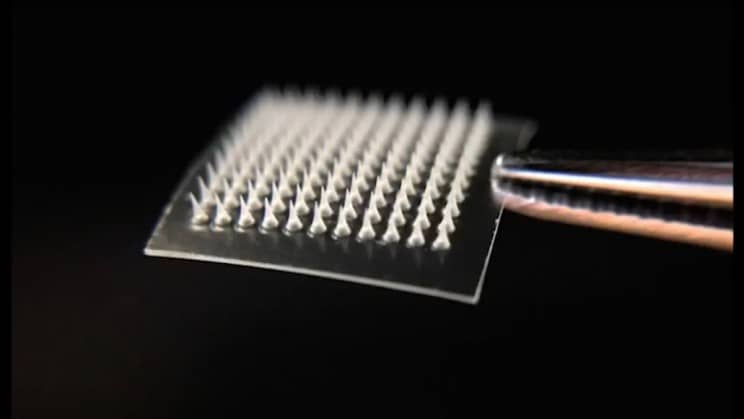A study published in New England Journal of Medicine showed that more than 10 percent of world population is obese. It accounts for millions of people around the globe, but losing fat is not the only problem of obese. Being overweight sometimes even below the level of obesity can be a health issue. Health concerns combined with irrational beauty standards has created a huge weight loss industry that made about $64 billion in the year 2014 in the US alone. The pie just gets bigger if you consider the rest of the world. Researchers at Columbia University in New York have now developed a skin patch that dissolves excess fat.
Researchers from the Columbia University and the University of North Carolina got together to develop the skin patch that would be helpful to fight both diabetes and obesity in the future.
Not all fat is bad, and that is a fact that many of us are not aware of. There are two key types of fat cells; the white and the brown ones. The brown fat cells are the healthier ones with smaller droplets and a high count of mitochondria so they can burn to provide energy. The new bones and organs of infants are cushioned by the same kind of fat that we commonly refer to as baby fat. As the baby grows, this brown fat continues to get replaced by the white fat cells that the body uses for long-term energy storage.
When we go on a diet, the body goes calory deficit and begins to consume the white fat cells. Unfortunately, they begin to accumulate again when you go off the diet again. Some existing treatments help to convert this white fat into the brown one, but the procedures are complicated. Li Qiang, the assistant professor of pathology and cell biology at CUMC and the co-Leader of the study, explained,
“There are several clinically available drugs that promote browning, but all must be given as pills or injections. This exposes the whole body to the drugs, which can lead to side effects such as stomach upset, weight gain, and bone fractures. Our skin patch appears to alleviate these complications by delivering most drugs directly to fat tissue.”
The tiny patch is covered with tiny needles that are full of drugs packed in nanoparticles. The 1 cm square surface of the patch is full of these microscopic needles that are loaded with nanoparticle drugs. When placed on the skin, it painlessly releases the drug into the skin tissue at an extremely slow pace. Zhen Gu, the study co-leader and biomedical engineering professor, says,
“The nanoparticles were designed to effectively hold the drug and then gradually collapse, releasing it into nearby tissue in a sustained way instead of spreading the drug throughout the body quickly.”
The drug administering patch was first tested on obese mice, each of them got two patches. One of these was laden with drugs while the other was empty. Control mice were only given empty patches, and all of these were replaced every three days over a period of four weeks. The mice that received the drug had a 20 percent reduction in fat and had lower fasting blood glucose levels. The team then analyzed the genes on the treated and untreated sides of mice and found that the treated ones had more similarity to brown fat as compared to the untreated ones.
“Many people will no doubt be excited to learn that we may be able to offer a noninvasive alternative to liposuction for reducing love handles. What’s much more important is that our patch may provide a safe and effective means of treating obesity and related metabolic disorders such as diabetes,” says Qiang.
With the problem of obesity rising in many parts of the world, the fat dissolving skin patch sounds like a safer and effective way of dealing with many other related diseases as well, particularly diabetes.

